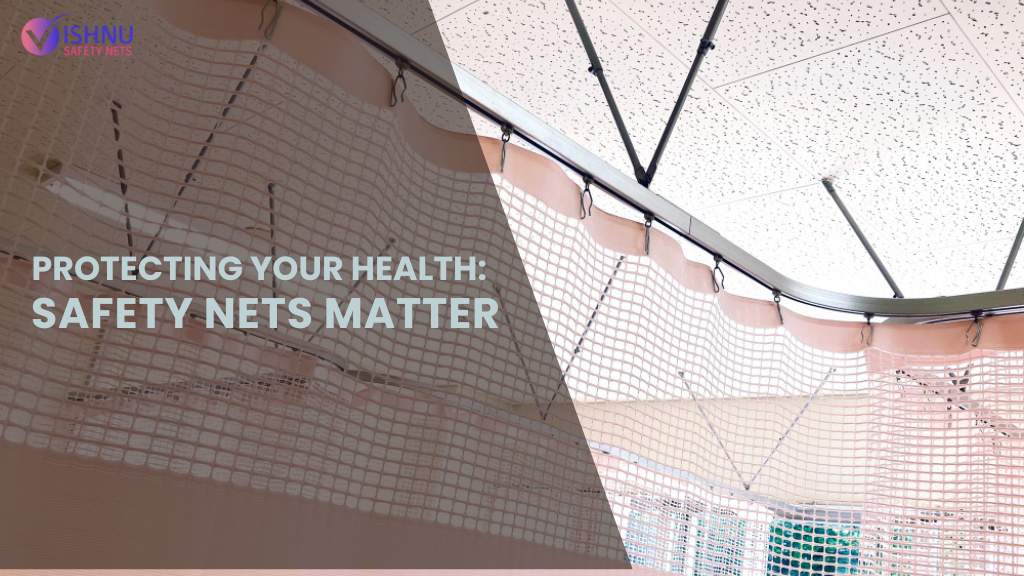Health centers and hospitals are some of the prime institutions where safety cannot be compromised at all. Medical treatments being the mainstay of health institutions much is spoken about the patients, staff, and visitors’ safety nets in health centers. In reality, much happens behind the scenes to provide for the safety of patients, employees, and visitors—the health center’s safety nets in all aspects, from preventing falls to state-of-the-art safety infrastructure.
We are researching to find out why safety nets in health centers. In doing so, we look into how this will protect vulnerable patients, reduce risks of liability, and improve the operational efficiency in health centers.
- Protection of Vulnerable Patients
Safety nets are installed in hospitals primarily to prevent injuries to vulnerable patients, such as children, elderly patients, and post-surgical patients. Patients with mobility problems or confusion are more likely to suffer accidents-in the form of falls, for instance- due to losing their balance. Putting up nets in places where they are most vulnerable, such as balconies, stairwells, or near walkways elevated on one side, will be protective against accidents caused by confused or dazed wandering.
Why safety nets at health facilities? They are meant to offer protection to a patient who cannot take full protection of himself/herself. This is most critical at children’s hospitals, psychiatric wings, and geriatric hospitals, where the protection of the patient is paramount.
- Security of Visitors
Hospitals and clinics see a large number of visitors daily, most of whom are unaware of the floor plans of the structures. There have been many cases of falling from the balconies on the upper floor as well as from the staircase. Installing safety nets at hospitals and clinics in Chennai can be the additional security for visitors who are not even aware of these dangers.
In putting safety nets, especially in multi-story buildings where people gather to see their loved ones, always with lots of movement in and out of the facility, there is peace of mind.
- Liability Reduction at the Hospital
Trial cases that are brought by patients accusing hospital or healthcare institution staff of negligence leading to falls or accidents have their way of bringing discredit to the image of a healthcare facility. Hospitals have the responsibility to ensure their institutions provide a safe environment so that the various practices in them do not lead to falls or accidents. Installation of safety nets in hospitals would work towards reducing legal liabilities that may come up in case of a fall accident which should be avoided.
These are precautionary measures for risk aversion. In a country where patients and families have been made aware of their rights, the hospital shows itself to be lawsuit-free with the help of measures to make sure that it is secure.
The importance of Safety Nets in Hospitals is do not just prevent the body from getting hurt; at the same time, they help the hospital uphold professionalism.
- Hospital Accreditation and Compliance Through Safety Nets
Hospitals must adhere to safety regulations in a tight manner to achieve and sustain accreditations and certifications. Installing safety nets in health centers is an effortless way of keeping up with many of these safety requirements. International and national health bodies tasked with accreditation look for health facilities that are more than adequate to simple measures aimed at protecting respective patients and staff.
These safety nets are a great addition to health centers that aim to meet some international benchmarks for safety. They also indicate readiness to be extra cautious, with higher accreditations which can help them augment their credibility.
- Prevention of Hospital Workplace Accidents
Apart from patient safety, safety nets at a hospital form a significant part in protecting staff from hospital workers who work in hazardous areas, including scaffolding and rooftops or at times through maintenance work. Therefore, safety nets ensure that the hospital maintenance worker can carry out his duties without the looming threat of falling from a height.
This is very critical, especially in refurbishment works or emergency operations, where the likelihood of being exposed to risks has gone up. The safety of employees decreases the chances of work-related accidents and maintains streamlined running operations of the hospitals without any breaks or hindrances.
- Grooming Hospitals in Crisis Situations
In emergency conditions such as natural disasters or pandemics, hospitals are pretty stressful. Overcrowding and frantic movement heighten the possibility of accidents. However, safety nets can cushion these events to bring staff and patients’ safety out safe in this mess.
Why safety nets in health centers? For they provide that much-needed security during crisis times and are a reliable countercyclical measure when most of everything else might be under strain.
- Boosting patient trust and security
The hospital remains a very frightening place for most of the patients, especially those who are compelled to stay there for an extended period. The installation of safety nets in hospitals offers patients and their families an assurance of security via healthcare facilities. Patients’ confidence in the facility increases when patients know safety measures are provided; thereby influencing their perception of care quality positively.
Besides, the spaces become useful through the presence of safety nets since areas that were earlier perceived as risky because of certain hazards became usable and safe for all, and patients feel better while in their rooms.
- Facilitation of Inclusive Healthcare Environment
Health facilities should be accessible to all and safe, without regard to age or mobility challenges. Inclusive safety nets ensure that the environment in healthcare places is accessible to all. For instance, if there are safety nets installed on ramps and stairs, it enables older adults or persons with limited mobility to walk confidently without a chance of falling.
- Cost-Effective Safety Solutions
Covers the safety mechanisms: Compared to other types of safety nets offered, those found in health centers are relatively cost-effective when it comes to preventing accidents from occurring. They are low maintenance, long-lasting, and highly durable, thus making it a sound investment for hospitals that would like to increase the safety factor without significant strain on their finances. This makes it an appropriate tool both for the small clinic and the large hospital network.
Vishnu Safety Nets: Sets the Pace for Healthcare Safety
As a provider of Safety Nets In Chennai, Vishnu Safety Nets offers solutions specifically designed to meet the needs of hospitals and health centers. With our high-quality long-lasting nets, health facilities can be assured of a safe environment for patients, visitors, and personnel. In terms of needs, for staircases, balconies, or other risky spaces, our products satisfy functionality with durability so that you have the peace of mind knowing your facility is safe.
Safety nets cannot be ignored in the hospitals. From protecting vulnerable patients to reducing liability on the part of the hospitals and enhancing the general health experience, safety nets are part of a health institution’s vital infrastructure. Their installation in health centers becomes, for healthcare administrators and facility managers, a smart proactive step toward ensuring safety for all.
Learn more about the importance of safety nets in Hospitals which improve the safety standards within your healthcare facility by using safety nets. Contact Vishnu Safety Nets today for all your high-quality Safety Nets In Chennai, which can endow a life-saving or a life-improving environment in the hospital.



